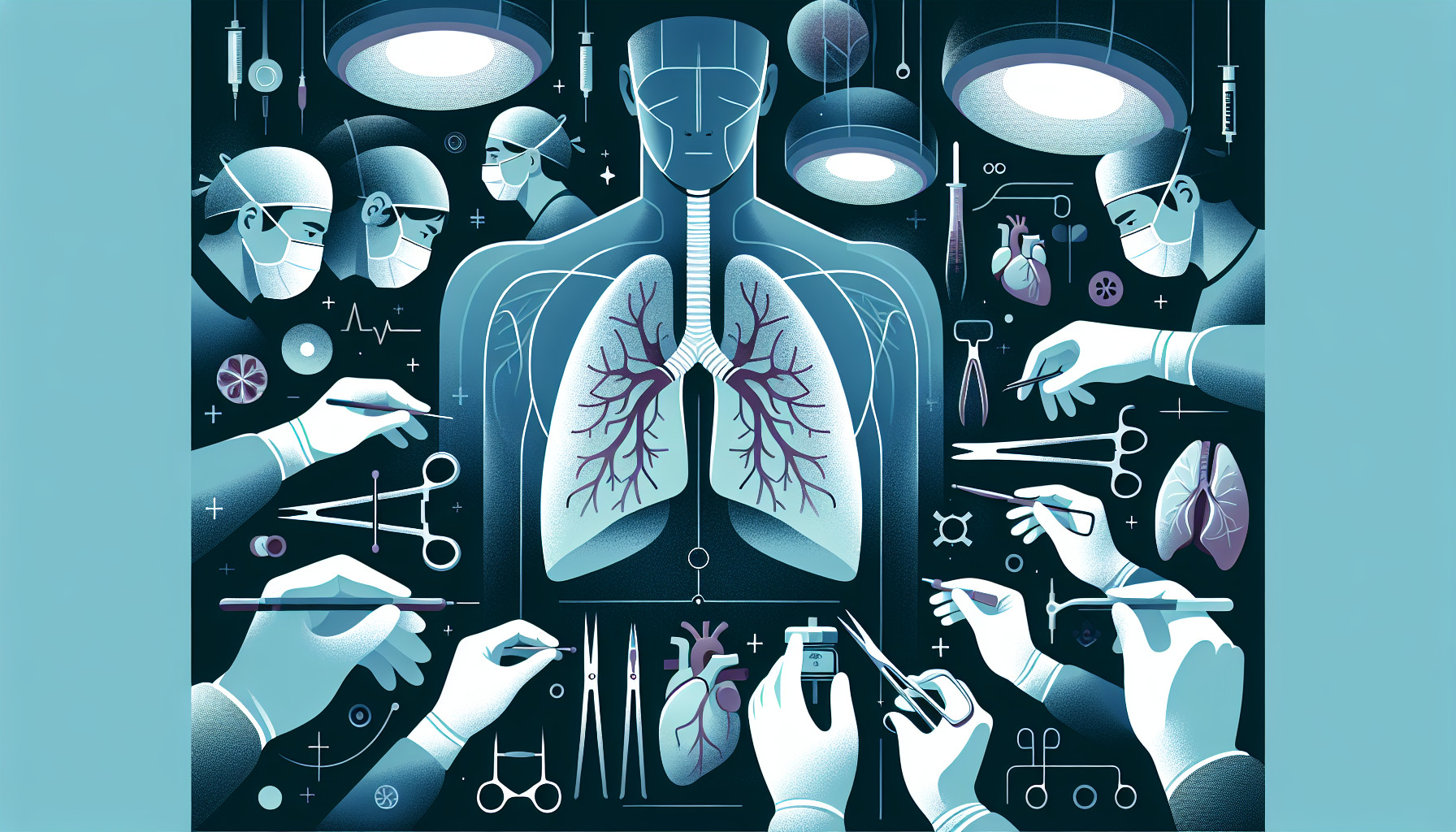Our Summary
This study looked at 1,500 lung transplants performed at a single center between 1988 and 2016. The patients were split into two groups - those who had their transplants before the introduction of the lung allocation score (LAS) in 2005, and those who had their transplants after. The LAS is a method used to allocate organs based on the severity of the patient’s disease.
The study found some differences in the two groups. The group who had their transplants after the introduction of the LAS had a higher average age and a higher percentage of male patients. The types of diseases the patients had also changed, with a higher percentage of patients having pulmonary fibrosis in the second group.
Double lung transplants were performed more often than single lung transplants in both groups, but the rate increased in the second group. The second group also had a higher rate of a complication called primary graft dysfunction, but this did not seem to affect patient survival rates during hospitalization or at one year.
In fact, the survival rate at one year was significantly higher in the second group. This suggests that the changes in how donors and recipients are selected, along with a better understanding of complications and long-term rejection, can lead to more transplants and better survival rates.
FAQs
- What is the Lung Allocation Score (LAS) and when was it introduced?
- Did the introduction of the LAS affect the survival rates of lung transplant patients?
- Were there any differences in complications and diseases between patients who received lung transplants before and after the introduction of the LAS?
Doctor’s Tip
One helpful tip a doctor might tell a patient about lung transplant is to follow a strict medication regimen to prevent rejection of the new lungs. It is important to take immunosuppressant medications as prescribed and to attend all follow-up appointments with your healthcare team. Additionally, maintaining a healthy lifestyle, including regular exercise and a balanced diet, can help improve the success of the transplant and overall quality of life.
Suitable For
Patients who are typically recommended for a lung transplant are those with end-stage lung disease that is not responding to other treatments, such as medication or oxygen therapy. Common conditions that may warrant a lung transplant include cystic fibrosis, pulmonary fibrosis, chronic obstructive pulmonary disease (COPD), and pulmonary hypertension. The severity of the disease, the patient’s overall health, and their ability to tolerate the transplant process are all factors that are taken into consideration when determining if a patient is a suitable candidate for a lung transplant.
Timeline
Before lung transplant:
- Patient is diagnosed with a severe lung disease such as pulmonary fibrosis or COPD
- Patient undergoes extensive testing to determine if they are a candidate for a transplant
- Patient is placed on a waiting list for a donor organ
- Patient may experience worsening symptoms and decreased quality of life as they wait for a transplant
After lung transplant:
- Patient undergoes surgery to receive a new lung or lungs
- Patient is closely monitored in the hospital for complications such as primary graft dysfunction
- Patient undergoes rehabilitation to regain strength and lung function
- Patient must take immunosuppressant medications for the rest of their life to prevent organ rejection
- Patient attends regular follow-up appointments with their transplant team for monitoring and adjustment of medications
- Patient experiences improvements in breathing and quality of life, but may still face challenges such as infections or rejection episodes
Overall, the timeline of a lung transplant involves a complex process of evaluation, surgery, recovery, and long-term management to ensure the best possible outcomes for the patient.
What to Ask Your Doctor
- What is the lung allocation score (LAS) and how does it impact the likelihood of receiving a lung transplant?
- What criteria do you use to determine if I am a candidate for a lung transplant?
- What are the different types of lung transplants (single vs. double) and which would be most suitable for me?
- What are the potential risks and complications associated with lung transplantation?
- What is the success rate of lung transplants at your center?
- How long is the average wait time for a lung transplant at your center?
- What is the recovery process like after a lung transplant?
- What follow-up care will I need after the transplant?
- What lifestyle changes will I need to make after the transplant?
- How often will I need to come in for check-ups and monitoring post-transplant?
Reference
Authors: Balsara KR, Krupnick AS, Bell JM, Khiabani A, Scavuzzo M, Hachem R, Trulock E, Witt C, Byers DE, Yusen R, Meyers B, Kozower B, Patterson GA, Puri V, Kreisel D. Journal: J Thorac Cardiovasc Surg. 2018 Aug;156(2):894-905.e3. doi: 10.1016/j.jtcvs.2018.03.112. Epub 2018 Apr 4. PMID: 29891245
